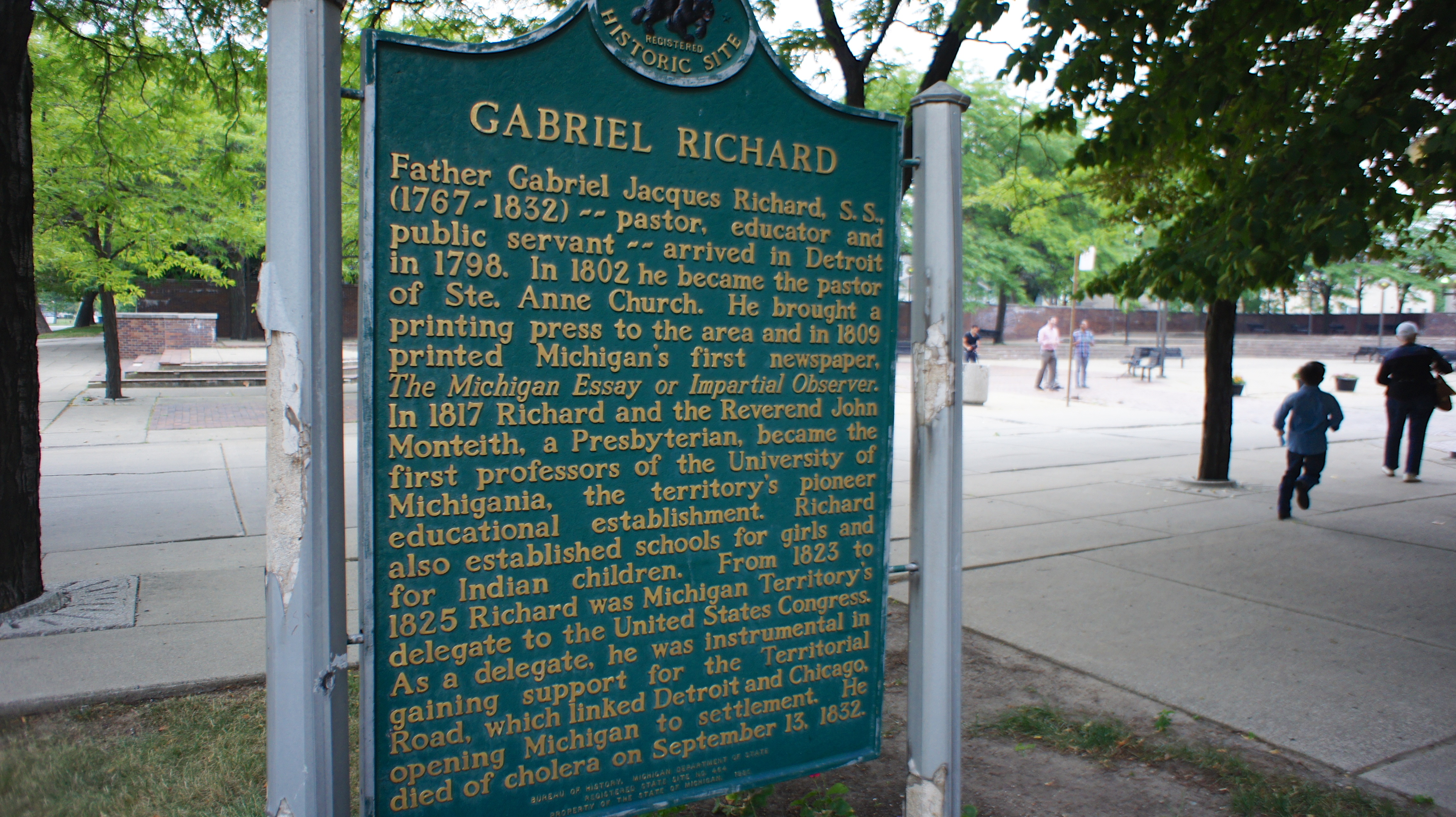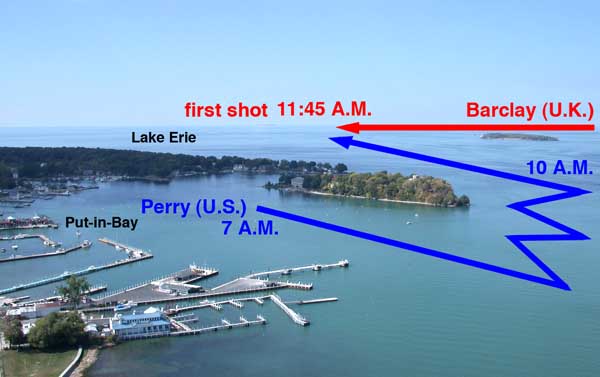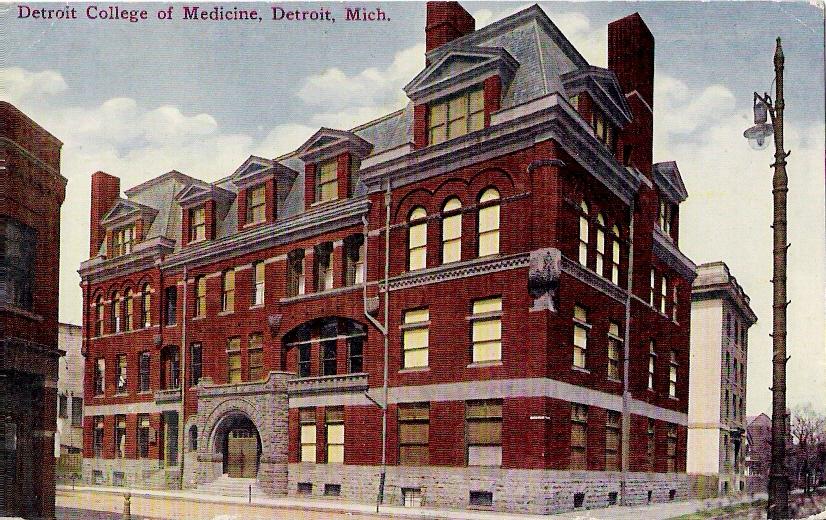|
Detroit City Hall
The Detroit City Hall was the seat of government for the city of Detroit, Michigan from 1871–1961. The building sat on the west side of Campus Martius bounded by Griswold Street to the west, Michigan Avenue to the north, Woodward Avenue to the east, and Fort Street to the south where One Kennedy Square stands, today. It stood three stories tall, and included a partially raised basement level and an attic level. An observation level was at the top of the bell tower. History Plans by architect James Anderson were complete in 1861, but construction was delayed because of restrictions for building materials during the Civil War. Constructed by the N. Osborn & Company of Rochester, New York, its foundation was laid in 1867, and the building finished construction in May 1871 at a total cost of $602,130. A dedicated ceremony for the new city hall was held on July 4, 1871. Though just 20 years old, the building was first proposed for demolition in 1894 at the request of Detroit Mayor ... [...More Info...] [...Related Items...] OR: [Wikipedia] [Google] [Baidu] |
Campus Martius Park
Campus Martius Park ( ') is a re-established park in Downtown Detroit, Michigan. After the fire of 1805, Campus Martius (from the Latin for ''Field of Mars'', where Roman heroes walked) was the focal point of Judge Augustus Woodward's plans to rebuild the city. It was named for the principal square in Marietta, Ohio, the first capital of the Northwest Territories. Description The park is located at the intersection of Woodward Avenue and Michigan Avenue, four blocks south of Grand Circus Park. The original park covered several acres and was a major gathering area for citizens. The park was lost in the 1900s as the city's downtown was reconfigured to accommodate increased vehicular traffic. Hart Plaza, along the riverfront, was designed to replace Campus Martius as a point of importance. But as Hart Plaza is a primarily hard-surfaced area, many residents came to lament the lack of true park space in the city's downtown area. This led to calls to rebuild Campus Martius, the ... [...More Info...] [...Related Items...] OR: [Wikipedia] [Google] [Baidu] |
Gabriel Richard
Gabriel Richard (pronounced rish-ARD) October 15, 1767 – September 13, 1832, was a French Roman Catholic priest who ministered to the French Catholics in the parish of Sainte Anne de Détroit, as well as Protestants and Native Americans living in Southeast Michigan. He established schools, a library, and vocational training with weaving looms. After Detroit was nearly destroyed by a fire in 1805, he and others created a new layout for the city. His motto following the fire, ''Speramus meliora; resurget cineribus'' ("We hope for better things; it will arise from the ashes") is inscribed on the Seal of the City of Detroit. Richard helped negotiate the Treaty of Fort Meigs. He was co-founder of the Catholepistemiad of Michigania (which would later be renamed the University of Michigan). He was the first Catholic priest elected to the U.S. House of Representatives as delegate of the Michigan Territory for the 18th Congress. The Fr. Gabriel Richard Guild was established in 202 ... [...More Info...] [...Related Items...] OR: [Wikipedia] [Google] [Baidu] |
Commerce
Commerce is the large-scale organized system of activities, functions, procedures and institutions directly and indirectly related to the exchange (buying and selling) of goods and services among two or more parties within local, regional, national or international economies. More specifically, commerce is not business, but rather the part of business which facilitates the movement and distribution of finished or unfinished but valuable goods and services from the producers to the end consumers on a large scale, as opposed to the sourcing of raw materials and manufacturing of those goods. Commerce is subtly different from trade as well, which is the final transaction, exchange or transfer of finished goods and services between a seller and an end consumer. Commerce not only includes trade as defined above, but also a series of transactions that happen between the producer and the seller with the help of the auxiliary services and means which facilitate such trade. These auxiliary ... [...More Info...] [...Related Items...] OR: [Wikipedia] [Google] [Baidu] |
Industrial Sector
In macroeconomics, the secondary sector of the economy is an economic sector in the three-sector theory that describes the role of manufacturing. It encompasses industries that produce a finished, usable product or are involved in construction. This sector generally takes the output of the primary sector (i.e. raw materials) and creates finished goods suitable for sale to domestic businesses or consumers and for export (via distribution through the tertiary sector). Many of these industries consume large quantities of energy, require factories and use machinery; they are often classified as light or heavy based on such quantities. This also produces waste materials and waste heat that may cause environmental problems or pollution (see negative externalities). Examples include textile production, car manufacturing, and handicraft. Manufacturing is an important activity in promoting economic growth and development. Nations that export manufactured products tend to generate h ... [...More Info...] [...Related Items...] OR: [Wikipedia] [Google] [Baidu] |
Justice
Justice, in its broadest sense, is the principle that people receive that which they deserve, with the interpretation of what then constitutes "deserving" being impacted upon by numerous fields, with many differing viewpoints and perspectives, including the concepts of moral correctness based on ethics, rationality, law, religion, equity and fairness. The state will sometimes endeavor to increase justice by operating courts and enforcing their rulings. Early theories of justice were set out by the Ancient Greek philosophers Plato in his work The Republic, and Aristotle in his Nicomachean Ethics. Advocates of divine command theory have said that justice issues from God. In the 1600s, philosophers such as John Locke said that justice derives from natural law. Social contract theory said that justice is derived from the mutual agreement of everyone. In the 1800s, utilitarian philosophers such as John Stuart Mill said that justice is based on the best outcomes for the gre ... [...More Info...] [...Related Items...] OR: [Wikipedia] [Google] [Baidu] |
Detroit Historical Museum
The Detroit Historical Museum is located at 5401 Woodward Avenue in the city's Cultural Center Historic District in Midtown Detroit. It chronicles the history of the Detroit area from cobblestone streets, 19th century stores, the auto assembly line, toy trains, fur trading from the 18th century, and much more. History Attorney and historian Clarence M. Burton donated his collections to the Detroit Public Library in 1914, leading to the development of the Detroit Historical Museum. In December 1921, Burton brought together 19 prominent local historians to found the Detroit Historical Society, an organization dedicated to the preservation of the city's history. In 1927, membership offices were leased and Society treasurer J. Bell Moran was appointed to set up a museum. A curator was hired and on November 19, 1928, the "highest museum in the world" opened in a one-room suite on the 23rd floor of the Barlum Tower, now the Cadillac Tower. William Edward Kapp, architect for the firm ... [...More Info...] [...Related Items...] OR: [Wikipedia] [Google] [Baidu] |
Belle Isle Park
Belle Isle Park, known simply as Belle Isle (), is a island park in Detroit, Michigan, developed in the late 19th century. It consists of Belle Isle, an island in the Detroit River, as well as several surrounding islets. The U.S.-Canada border is in the channel south of Belle Isle. Owned by the city of Detroit, Belle Isle is managed as a state park by the Michigan Department of Natural Resources through a 30-year lease initiated in 2013; it was previously a city park. Belle Isle Park is the largest city-owned island park in the United States, and Belle Isle is the third largest island in the Detroit River, after Grosse Ile and Fighting Island. It is connected to mainland Detroit by the MacArthur Bridge. Belle Isle Park is home to the Belle Isle Aquarium, the Belle Isle Conservatory, the Belle Isle Nature Center, the James Scott Memorial Fountain, the Dossin Great Lakes Museum, a municipal golf course, a half-mile (800 m) swimming beach, and numerous other monuments and ... [...More Info...] [...Related Items...] OR: [Wikipedia] [Google] [Baidu] |
Battle Of Lake Erie
The Battle of Lake Erie, sometimes called the Battle of Put-in-Bay, was fought on 10 September 1813, on Lake Erie off the shore of Ohio during the War of 1812. Nine vessels of the United States Navy defeated and captured six vessels of the British Royal Navy. This ensured American control of the lake for the rest of the war, which in turn allowed the Americans to recover Detroit and win the Battle of the Thames to break the Indian confederation of Tecumseh. It was one of the biggest naval battles of the War of 1812. Background 1812 When the war broke out, the British immediately seized control of Lake Erie. They already had a small force of warships there: the sloop-of-war and the brig ''General Hunter''. The schooner was under construction and was put into service a few weeks after the outbreak of war. These vessels were controlled by the Provincial Marine, which was a military transport service and not a naval service. Nevertheless, the Americans lacked any counter to the ... [...More Info...] [...Related Items...] OR: [Wikipedia] [Google] [Baidu] |
Fort Wayne (Detroit)
Fort Wayne is located in the city of Detroit, Michigan, at the foot of Livernois Avenue in the Delray neighborhood. The fort is situated on the Detroit River at a point where it is under half a mile to the Ontario shore. The original 1848 limestone barracks (with later brick additions) still stands, as does the 1845 fort (renovated in 1863 with brick exterior facing). On the grounds but outside the original fort are additional barracks, officers quarters, hospital, shops, a recreation building, commissary, guard house, garage, and stables. The fort sits on . Since the 1970s, , including the original fort and a number of buildings, has been operated by the city of Detroit. The remaining area is operated by the U.S. Army Corps of Engineers as a boatyard. The fort was designated a Michigan State Historic Site in 1958 and listed on the National Register of Historic Places in 1971. Background Fort Wayne is Detroit's third fort. The first, Fort Pontchartrain du Detroit, was built by ... [...More Info...] [...Related Items...] OR: [Wikipedia] [Google] [Baidu] |
Wayne State University
Wayne State University (WSU) is a public research university in Detroit, Michigan. It is Michigan's third-largest university. Founded in 1868, Wayne State consists of 13 schools and colleges offering approximately 350 programs to nearly 25,000 graduate and undergraduate students. Wayne State University, along with the University of Michigan and Michigan State University, compose the University Research Corridor of Michigan. Wayne State is classified among "R1: Doctoral Universities – Very high research activity". Wayne State's main campus comprises 203 acres linking more than 100 education and research buildings. It also has four satellite campuses in Macomb, Wayne and Jackson counties. The Wayne State Warriors compete in the NCAA Division II Great Lakes Intercollegiate Athletic Conference (GLIAC). History The Wayne State University was established in 1868 as the Detroit Medical College by five returning Civil War veterans. The college charter from 1868 was signed by f ... [...More Info...] [...Related Items...] OR: [Wikipedia] [Google] [Baidu] |
John Donaldson (architect)
John M. Donaldson (January 17, 1854 – December 20, 1941) was an American architect and artist born on January 17, 1854, in Stirling, Scotland. Donaldson was principal designer of the successful Detroit-based architectural firm Donaldson and Meier from 1880 onwards. Early years In 1856 John and Isabella (McNaughten) Donaldson immigrated to Detroit, Michigan with their two-year-old son John. He graduated from the Detroit Public Schools and later from the Polytechnic College. Following that he returned to Europe where he studied at the Academy of Fine Arts in Munich, Germany, at the École des Beaux-Arts in Paris, France, finishing his European art studies in Venice, Italy. Success in Detroit He returned to Detroit and in 1874 was invited to produce architectural sculpture for the Detroit City Hall then being built. For this building Donaldson made a model of a statue of Pere Marquette that was carved in stone by Julius Melchers. When the building was demolished in the 1950s ... [...More Info...] [...Related Items...] OR: [Wikipedia] [Google] [Baidu] |
Julius T
The gens Julia (''gēns Iūlia'', ) was one of the most prominent patrician families in ancient Rome. Members of the gens attained the highest dignities of the state in the earliest times of the Republic. The first of the family to obtain the consulship was Gaius Julius Iulus in 489 BC. The gens is perhaps best known, however, for Gaius Julius Caesar, the dictator and grand uncle of the emperor Augustus, through whom the name was passed to the so-called Julio-Claudian dynasty of the first century AD. The Julius became very common in imperial times, as the descendants of persons enrolled as citizens under the early emperors began to make their mark in history.''Dictionary of Greek and Roman Biography and Mythology'', vol. II, pp. 642, 643. Origin The Julii were of Alban origin, mentioned as one of the leading Alban houses, which Tullus Hostilius removed to Rome upon the destruction of Alba Longa. The Julii also existed at an early period at Bovillae, evidenced by a very a ... [...More Info...] [...Related Items...] OR: [Wikipedia] [Google] [Baidu] |






.jpg)